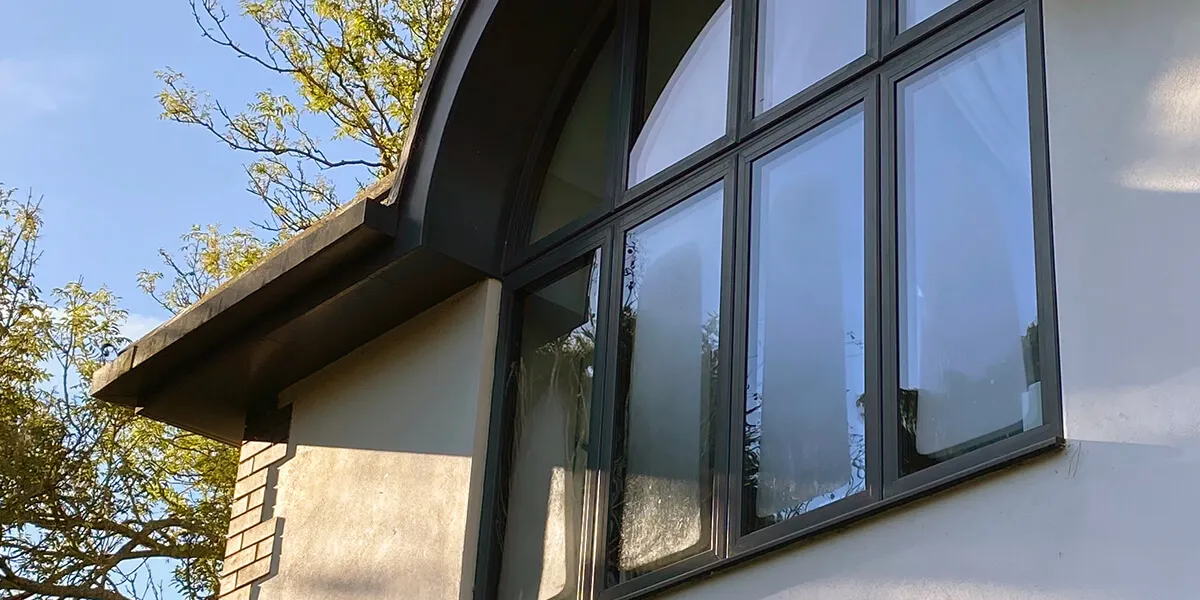How to Stop Condensation on Windows: Causes and Solutions
To know how to prevent condensation so that it doesn’t blight your windows or pose a health risk, it helps to have an understanding of what some of the causes of condensation are.
Many UK homes suffer from the issue and condensation on windows often rears during damp, cold conditions.
Find out more about what triggers it, signs that it may appear and how it is best managed.
What is Condensation?
Condensation comes about when the air’s water vapour transforms into a liquid state once it hits a cold surface – such as a window on a cool morning.
Think of it this way – whilst you have a cold drink in your hand and it’s a warm day, a foggy layer forms and that’s because of the contrasting temperature difference between the two.
You see it a lot on windows due to them being cooler than the internal air temperature.
Why is Condensation a Windows Thing?
Condensation on windows can emerge as a result of temperature differences, humidity changes and ventilation.
In this country, seasonal weather can vary from cold one minute to humid the next, which is what makes condensation on windows such a prevalent phenomenon.
Moisture arises in the shape of droplets or fog once warm, moist indoor air strikes a cold window surface. It can worsen from insufficient ventilation, as humidity then has no means of escape.
Typical Indicators of Condensation
Condensation on windows can materialise as follows:
– In a misty or foggy effect
– As water droplets on the glazed area
– Appearance of mould or damp around the frames
Prompt action as soon as any of the signs become visible will safeguard the windows from damage.
Threats Posed by Condensation
Neglecting to deal with it can evolve into serious problems. Repeated moisture exposure accelerates mould growth, impairing the structural integrity of windows, their sills and nearby walls.
There are also potential health implications, particularly if you suffer respiratory issues, so don’t be slow to address the situation to maintain a healthy home and fit condition.

Ventilation Techniques to Offset Condensation
An improvement in ventilation is a method of stopping excess moisture from taking hold:
Airflow Systems: They will disseminate fresh air around rooms to give your house a more balanced indoor humidity.
PIV Units: Positive Input Ventilation (PIV) systems are exceptionally good at reducing indoor moisture, particularly in large areas.
Air Vents and Extractor Fans: Perfect for notoriously high-humidity areas like kitchens and bathrooms for removing moisture from the air.
Extra Tactics to Reduce Condensation
A few other recommended steps you can try out:
– Stop the release of steam from pans whilst cooking by keeping their lids on
– Shut doors in rooms with high-humidity
– Account for ventilation where washing machines are concerned
– Place furniture away from walls
– Don’t put too many clothes in cupboards and wardrobes
Why Does Condensation Form Inside of Windows?
It can come about as a result of things like hot showers being taken and the cooking of food, both of which raise humidity levels and trigger condensation.
Well-controlled heating and ventilation is imperative to stop these activities causing moisture to manifest on windows.
Why Does Condensation Form Outside of Windows?
It arises from the contrast between warm and cooler conditions inside and out and generally occurs during the coldest seasons.
Don’t necessarily view it as a bad sign as it shows that your windows are in good working order and heat from inside isn’t managing to escape to the external pane. The same goes for conservatory condensation.
How Does Condensation Materialise Between Panes?
Usually it will be due to a sealing issue if it emerges between double-glazed panes. Ineffective sealing gives moisture a route into the space between panes, diminishing insulation and making it hard to keep a house cosy.
Reach out to a window professional for guidance on how to stop condensation, who may advise that the affected windows are replaced.
Gazing Through Clear Windows
Window condensation eventuates in part because of temperature and humidity, but it can be managed with certain steps.
Some understanding of the causes of condensation, what the triggers are and practical remedies can ensure windows remain clear, protecting your property and sustaining a snug living atmosphere.
Clear windows also make for a healthy and happy home.
Why is condensation on the outside of my new windows?
Condensation on the outside of new replacement windows is actually nothing to be alarmed about! It indicates that the windows are energy efficient and are preventing heat from escaping. Moisture condenses into water droplets when there is a temperature difference i.e. warm air collides with a window’s cold surface.
Can triple glazing reduce condensation?
It certainly has the ability to do that as a three-paned window offers greater insulation than a single or double-glazed window. A warmer interior glazed surface minimises the possibility of it forming internally. Be aware that condensation can appear externally at certain points of the year.
Are dehumidifiers good for stopping condensation on windows?
As a tactic for how to stop condensation, dehumidifiers are worth trying. They will lower humidity in the home and the extent of moisture that can condense on the cold surface of a window. Use them in areas such as bathrooms and kitchens to snare moisture.
Why do I get condensation on bedroom windows?
You can attribute it to a mixture of high humidity and temperature differences, and moisture will originate from things like the use of indoor plants, sweating and breathing. Moisture will condense on a window’s cold surface upon outside air being cooler than it is on the inside. It also emerges if there is scant ventilation and too much humidity builds up. Offset this by opening your windows every now and again during the day.
Request your free quote
Simply fill in your details for your free, no obligation quotation, and click "Get Quote"
Want to speak with an advisor? Give us a call on 0800 011 2400
Our friendly team will be pleased to help with any questions you may have.
